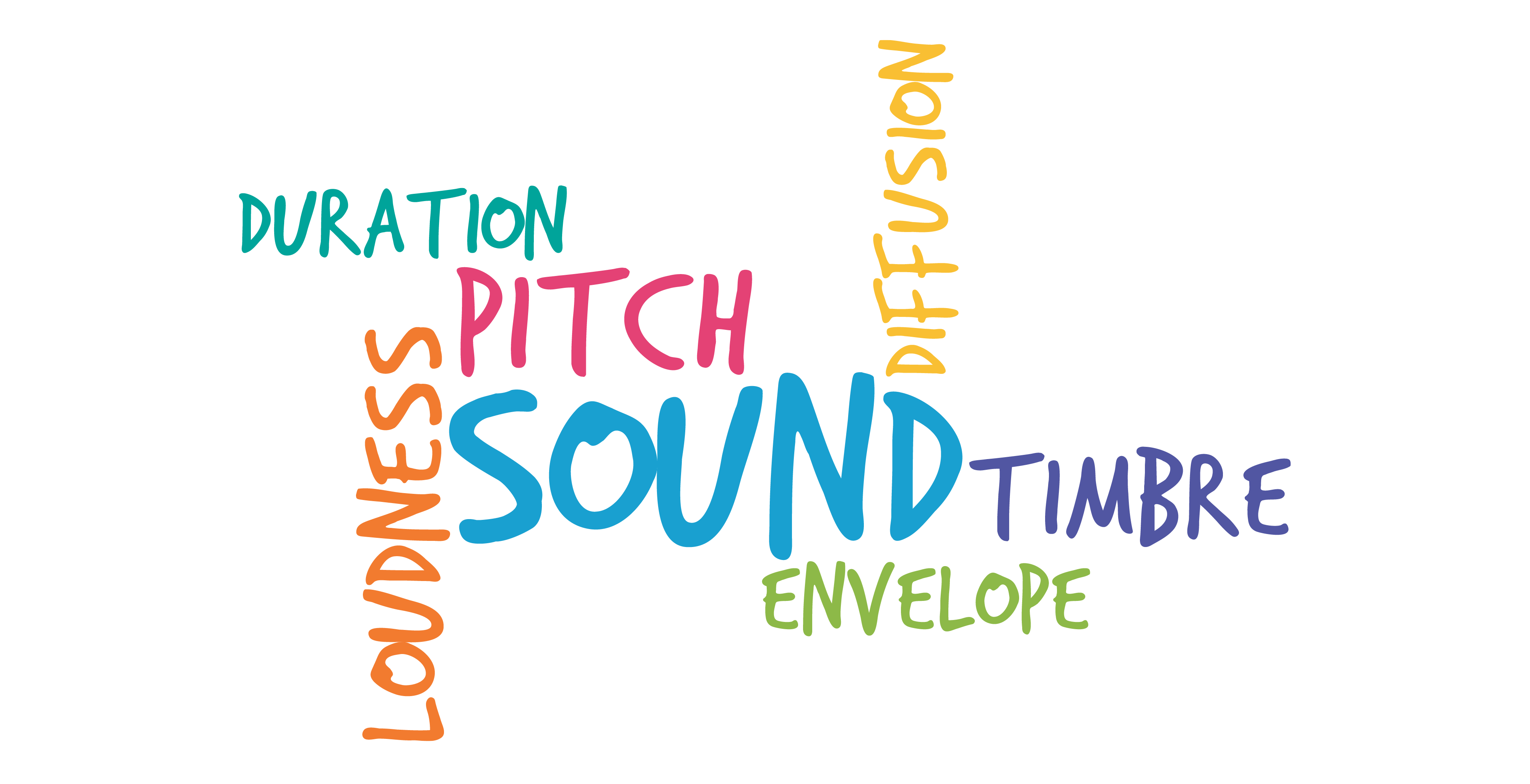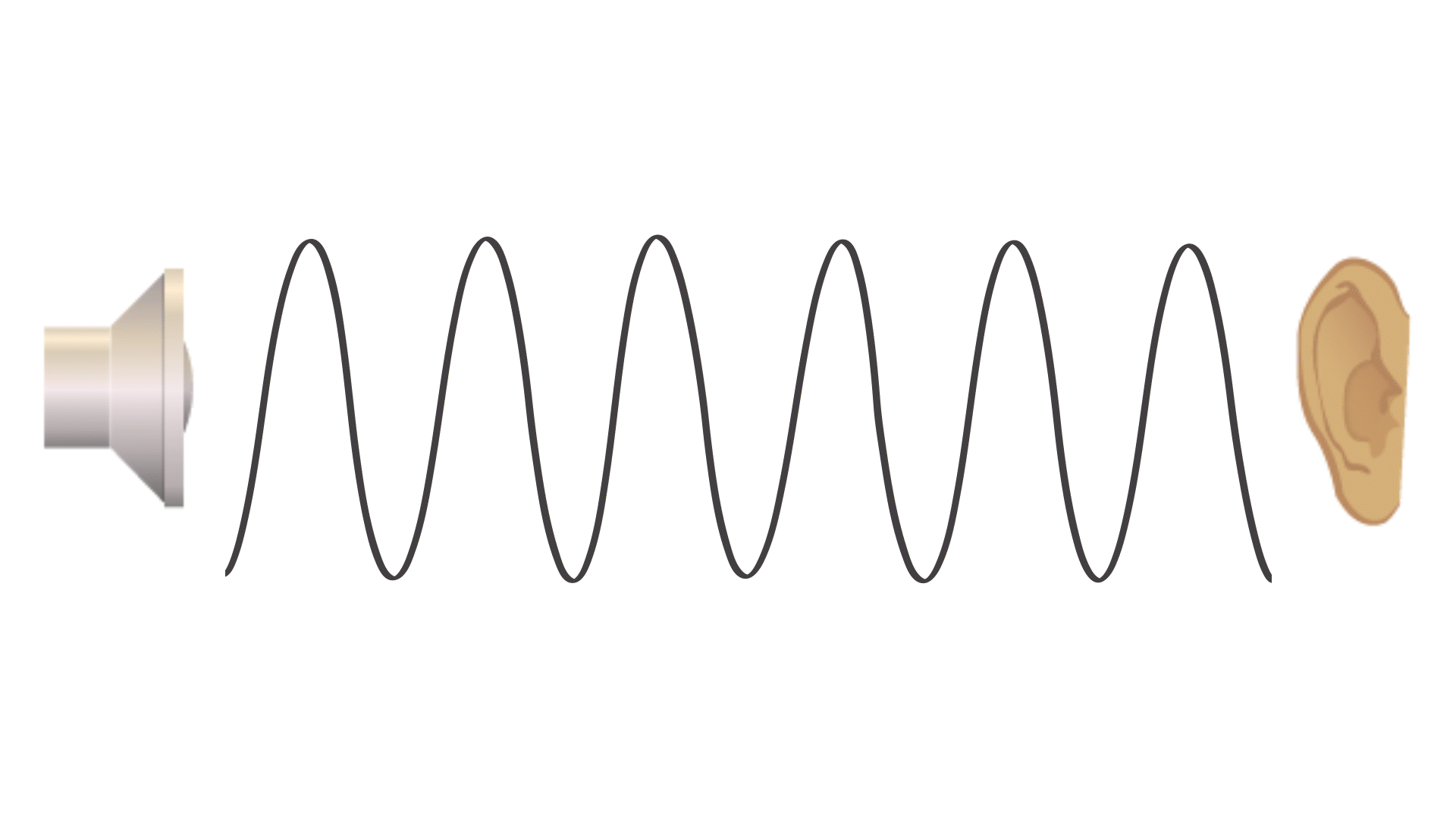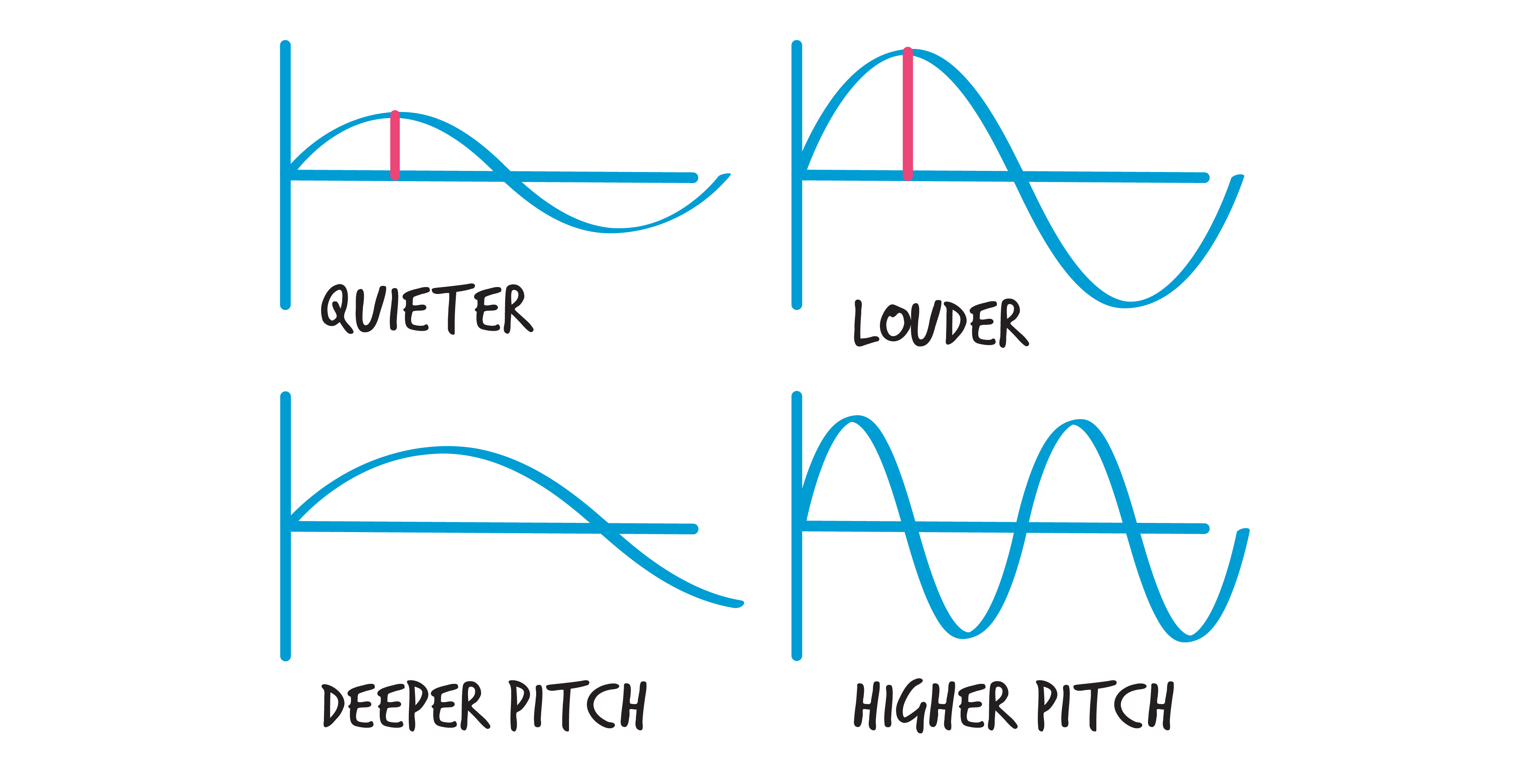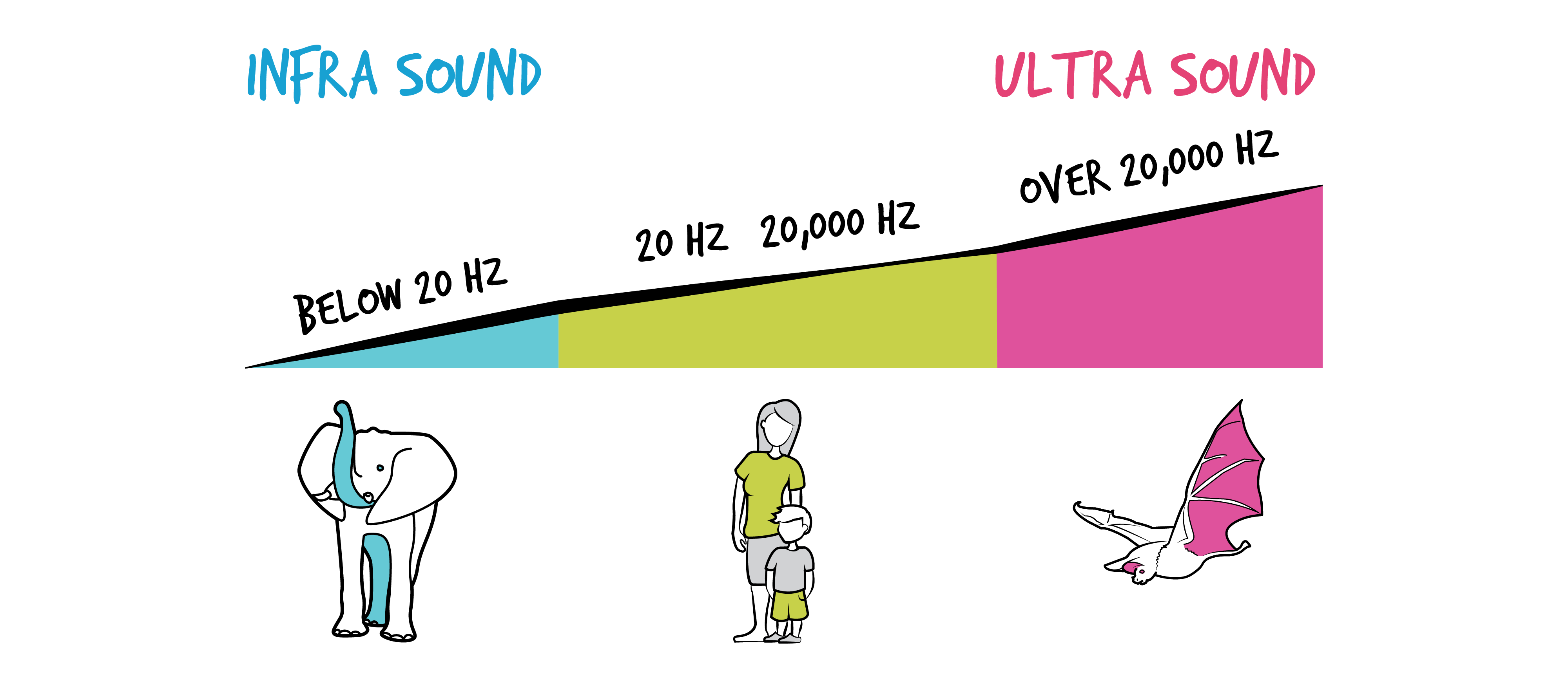
5.2 Properties of Sounds

SOUND PROPERTIES
Let’s start with a brief introduction to the biophysics of hearing. Sounds occur as disturbances of molecules that take the form of waves travelling from the source of the sound to the human ear (Lupton, 2018). When the sound waves reach a person’s eardrums, they cause vibrations that act like signals for the auditory nerve and the brain (Lupton, 2018). This is the process of hearing. The sounds are then interpreted as either important or not, depending on their source. Some sounds convey information, others add to aesthetic appreciation, and others stimulate memories. All of these enhance and impact people’s experiences.

Soundwaves and the human ear
Each of us may hear sounds a little differently since hearing ranges are unique to individuals. Sounds are also modified by the way they are reflected or absorbed by environmental features such as terrain, surrounding objects, and the density of architectural or natural elements (Case & Day, 2019). The more designers know about the properties of designing with sound, the more appropriate the designed outcome may be for the context.
There are six properties of sound relevant to designing products, services, and environments. These include the following:
1. Pitch and frequency both relate to the length, height, and vibration of the soundwave. A higher or greater frequency of waves produces a higher pitch of sound and conversely, the lower or lesser the wave frequency the lower the pitch of the sound that we hear.

The perception of sound depends on the physical frequency of the soundwave
Frequency is measured in hertz (Hz). We can perceive sound waves with frequencies between 20 Hz and 20 kHz (kilohertz); this is our range of hearing. Within this range, the levels from 1,000 Hz to 5,000 Hz are the important working ranges for designers to consider because they are the levels of sound waves that are comfortable for most people. High-frequency sound waves include shrill sounds like whistles, whereas low-frequency sound waves may come from the humming of a car engine. The sound waves beyond our human hearing range are not relevant for most designs; they include infrasound with wave frequencies below 20 Hz and ultrasound, with wave frequencies above 20 kHz (Case &and Day, 2018; Lupton, 2018).

Human hearing is in the range of 20Hz to 20,000 Hz
It is important to consider sound frequencies and their resultant pitch when designing sounds for communicating different messages, since the ability to hear loud or soft sounds varies with the sound frequency. For example, few people would wear earphones for any length of time if the sound was permanently set at a high pitch, but at a lower pitch, we might be comfortable wearing our earphones for hours.
2. Timbre refers to characteristic qualities or tones of sound that result from different sound frequencies grouped together or from different sources of sound production, like a metal clarinet versus a wood guitar. The frequency of each sound may be the same, but the source material is different for each one, resulting in our perception of the sounds as differing. It is important for designers to explore the types of sounds that are compatible with their products and make appropriate material choices to support the desired outcome.
Activity Time!
Throughout this chapter, you can click on the teal icons to hear sound samples.
The timbre of a sound varies according to source frequency as well as source material
3. Loudness is measured in decibels (dB) and refers to how high the volume of sound is. We can hear levels of sound between 0 and 140 dB, even though some sounds are lower than 0 dB or higher than 140 dB. Between 130 and 140 dB we can only endure 1 second of exposure before experiencing a damaged eardrum. However, we can easily endure 8 hours of exposure to 85 dB sounds, which are in the comfortable range for our ears, such as a computer at 40 dB or a dishwasher at 70 dB. However, a food processor at 95 dB or a jackhammer at 110 dB (Centre for Hearing and Communication, 2022) starts to be uncomfortable if the sound continues for too long. Standards for urban and institutional environments specify noise exposure limits; however, they often target reduced health risks and not necessarily pleasant environments or product interaction experiences.
Loudness levels of the things around us
4. Duration refers to the length of time the sound occurs or is noticed, from start to finish. It may not actually reflect the exact time the sound began or ended, as much as it reflects the length of time a person can identify the sound and the pattern of its rhythm or tempo. In this case, a designer may want to consider the duration of one cycle of sound (period of sound) in relation to the continuous pattern (pulse) of the communication. For example, the sound cycles of washing machines, kitchen appliances, and lawnmowers have continuous patterns. The next time you use a blender, try to identify the duration of one cycle of sound before it repeats. Design teams can be involved in intentionally designing these sound patterns to ensure that they will blend into their surroundings.
The duration of the sound produced depends on the duration of the pulse and the pattern of repetition of each pulse
5. Envelope refers to the pattern of the sound over its duration from the attack – just prior to reaching its steady state, to the sustain – the steady state at maximum intensity, and finally, to the decay – when the sound fades to silence (Case & Day, 2019). Doing your laundry exposes you to each of these phases of sound; the attack begins right after closing the lid when water pours into the machine. Once full, the sound pattern of the water and clothes swishing around reaches its steady or sustained state, and finally, the decay phase happens when the water drains out of the washer. Can you imagine the difference in the sound envelope when listening to a chiming crystal glass compared to listening to a lawnmower or chainsaw? Which one of these sound scenarios could easily become background noise and which one might evoke your emotions? The effects of these different patterns of sound on users are important in designing products.
The pattern of sound over its duration
6. Diffusion refers to how sound scatters when the sound waves hit different textured surfaces. Sound waves can be reflected into the environment, absorbed, or diffused. As you can see in the diagram below, Reflection is when the quality of the sound does not change because the same amount of sound bounces up after hitting a smooth surface. Whereas you can see that the impact on an irregular surface can break the sound vibration into smaller waves, which then travel in different directions or become diffused. When sound waves are absorbed, the sound dissipates and can no longer be heard. Waves can be deadened by cotton, wool, or foam rubber, or optimized by hitting hard, smooth, and shiny surfaces (Lupton, 2018). Designers are aware of the challenges of too much noise in the environment and choose materials that absorb or disperse sound waves.

How sound travels when hitting different surfaces
These technical descriptions may be helpful to understand how sound can be manipulated by design. By changing any of the 6 sound variables, designers can experiment with different sounds for fit and comfort considerations. Designers can try out different sound qualities, at the same time as exploring different iterations of product appearance and tactile qualities, to develop a range of concepts that best optimize sensory product interactions.

